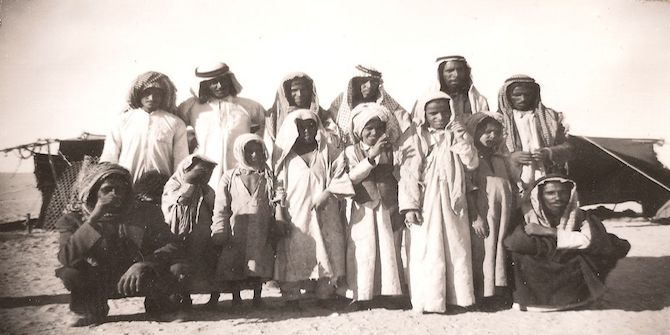by Alexandra Gomes, Asseel Al-Ragam and Sharifa Alshalfan

On 22 March 2020, Kuwait issued a compulsory 4am to 5pm curfew as part of a list of emergency directives that aim to combat the spread of COVID-19, a virus that has upended everyone’s daily existence. As life has come to a halt, with the closure of schools, parks and most businesses, these measures seem to be shifting users’ behaviour in the public spaces of Kuwait’s neighbourhoods. Outside curfew hours, cars remain parked while residents leave their homes to exercise in their neighbourhoods while their children play on the streets. Without traffic, as we have seen in many parts of the world, local streets have become a space to unwind, be active and play.

Kuwait is a high-income city-state emirate where the availability of resources has created an extended patchwork of residential neighbourhoods; most of them with sub-urban characteristics and low densities that lack mixed-use development. Prior to the COVID-19 pandemic, Kuwaitis were driving to work, shops, gyms and neighbourhood parks. Ninety-nine percent of Kuwaitis use motorised vehicles for their daily trips and this behaviour has transformed the streets of Kuwait into spaces for cars rather than pedestrians. In residential areas, cars dominate the landscape and occupy the sidewalks. These sidewalks are also often cluttered, leading to unsafe routes for pedestrians and creating barriers to walkability and the use of public space.

Today, the confinement of mandatory lockdown offers an opportunity for individuals to reflect on their use of public space. We must resolve to carry out sustainable decisions such as those implemented during the pandemic and that have had positive public health and environmental impacts. These include strict limitations on car movement, digitalising the work environment, encouraging greater use of public space and the adaptive reuse of public buildings. Stay at home orders and closures of retail outlets and restaurants are motivating other forms of leisure activities outside of curfew hours such as walking and exercising in residential neighbourhoods. The decrease in car use and grounded planes are significantly improving Kuwait’s air quality. The state’s decision to restrict neighbourhood supermarkets to residents of these communities to quell hoarding and to limit the spread of the virus strengthens the role of public amenities. The adaptive reuse of schools, unoccupied due to nationwide closures, are now accommodating non-Kuwaiti employees working in these districts. This decision toppled decades of socio-demographic residential planning that privileged one group over another and introduced live-work situations, a phenomenon that was largely absent in the past. This mandate that bridged the travel distance between home and work, along with a compulsory 4am to 5pm curfew (now shifted to 8am to 4pm due to Ramadan), are some of the many instruments that will shift users’ public space behaviour in residential neighbourhoods in Kuwait. While these bold decisions are being praised as this crisis unfolds, they should also be maintained and, at times, adapted to adjust to a new ‘normal’. Fundamental changes to planning and development are imminent, as oil prices plummet and local reliance on cheap fuel and welfare assurances are no longer guaranteed.
Governance will play a fundamental role in implementing these structural changes that will have an environmental and public health impact. This is in line with the position of the World Health Organization which recommended public space policies and interventions at the national level. Despite this, some organisational restructuring is still necessary. At present, overlapping responsibilities and limited public space policies have hindered street dynamism associated with city life. Single use zoning combined with cheap oil incentivise motorisation. In contrast, increasing urban densities and mixed-use development, re-thinking housing policies and types and updating walking and cycling infrastructure will promote a healthier and more dynamic city life. Yet densification, as we are reminded in today’s COVID-19 world, must be supported by pedestrianised areas, large enough to accommodate ‘physical distancing’, a term that has unfortunately become all too familiar. At the street level, discouraging car traffic while improving pedestrian infrastructure would dramatically alter public space appearance, support pedestrian traffic flow and create safer streets. The global COVID-19 lockdowns have been a catalyst for expanding cycling and pedestrian infrastructures. Moreover, a reliable and clean public transport system, accessible to all, would encourage public space use. These ‘fixes’ would radically transform traffic flow and create safer environments. These reflections on Kuwait in a COVID-19 world clearly demonstrate the relevance of new research, design practices and policies.
This crisis reminds us that we are all connected, and we are as strong as our weakest link. Here is an opportunity to re-examine our urban environments because the fallout can no longer be ignored. Kuwait must re-evaluate its car reliance, reassess its housing types and sizes, explore mixed-use planning and build diverse and equitable socio-economic residential communities. The New York Times posed the question can city life survive coronavirus? For Kuwait, and for the rest of the world, the answer must be yes.
Some of the reflections from this blog post are further explored in the Public Space in Kuwait project, now reaching its final stage where these issues will be discussed in relation to pre-COVID-19 spatial practices and urban policies in two neighbourhoods of Kuwait: Qortuba and Salmiya.






Thanks for sharing this information.
I read your post and I really appreciate your efforts and research for this. This is very useful information.
Nice Post!
Visit our Website for Updated Blogs.
https://www.analyticssteps.com/
This was a very meaningful post, so informative and encouraging information, Thank you for this post.
on demand app development company